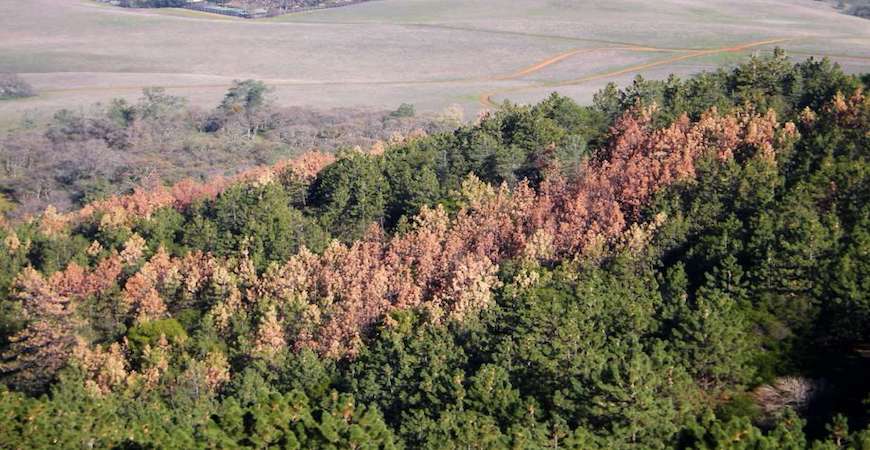
The recent drought left record numbers of trees dead and dying and vulnerable to fire in virtually every corner of California, but a dense tract of evergreen forest in northern Mendocino County remained wet and healthy.
The reason, say the authors of a study published Monday, is that the trees are hydrating from the rock deep beneath them.
Scientists have long known that tree roots push their way through soil to the weathered bedrock. But the new study, conducted by researchers at UC Berkeley and the University of Texas at Austin, suggests the roots sometimes drop 50 feet or more, to a place where there’s a lot more water than previously thought.
This reserve of water in the pores of underground rock is so vast, the authors say, that it not only provides a twist on how trees are nourished but could change the narrative of how water flows to streams and disperses into the atmosphere.
“I think we’ve identified an unrecognized process in the earth’s surface that matters to a lot of things,” said William Dietrich, an earth and planetary scientist at UC Berkeley and co-author of the study. “This discovery of ‘rock moisture’ makes us have to look at a lot more questions.”

In the old-growth forest west of Laytonville, Dietrich and the study’s lead author, Daniella Rempe of the University of Texas at Austin, used neutron probes to measure how much water was cached in the rock beneath the soil between 2013 and 2016 — a period that includes the peak years of California’s drought.
They found that as much as 27 percent of annual rainfall seeped into the underground rock and collected in its fractures. It was more than what was captured in the soil above — much of that simply washing off in the more porous dirt and debris.
“What hasn’t been appreciated is that this (rock) reservoir can make or break a forest,” said Rempe, a geology professor. “We know that the soil moisture is not always enough.”
Such was the case during California’s five-year drought, she said. None of the Douglas fir, redwood, oak or madrone trees that live at the test site perished, even as more than 100 million trees died statewide, according to the U.S. Forest Service.
Mendocino County tends to see more rain than many parts of the state, but Rempe said that without the fractured rock to store water during the dry season, the landscape wouldn’t have remained as fit as it did.
Tracking the distribution of these hidden rock reserves and figuring out how much water they hold isn’t easy, but scientists may have found a key to better understanding the resiliency of forest lands.
The tens of millions of dead trees that have left sprawling mountainsides a rusty brown in California have prompted fears of increased fire danger. Dying trees also compromise a forest’s ability to clean and filter water as well as absorb carbon, which contributes to the planet’s warming when released into the atmosphere.
Roger Bales, an engineering professor at UC Merced who was not involved in the new paper, has looked at how forests in the Sierra Nevada have survived long, hot summers and multiyear dry spells by tapping the porous underground rock.
During the latest drought, though, the weathered bedrock eventually ran out of water or simply didn’t have reachable supplies in places such as the southern Sierra, ground zero for the die-off, according to Bales.
“You basically depleted your storage and water accessible to the root after a couple of years,” he said. “Had the drought gone another year, we would have seen a lot more tree mortality than we did.”
The research in the Sierra, and now Mendocino County, is helping pioneer the understanding of what scientists call the “critical zone,” the earth’s surface from the tops of trees to the bedrock.
The region, which is not only where trees draw water but where people get water and grow food, has been seen as increasingly important for sustaining life, especially in an era of climate change.
Dietrich expects that the continued study of “rock moisture” in the critical zone will add insights on the water cycle locally and globally.
He hopes to see better modeling of how water moves between rocks and rivers and benefits fish, farms and cities. He foresees better projections of weather and atmospheric conditions as it becomes clearer how water in rock gets into the air through trees and evaporation from leaves.
The new study was published in the scientific journal PNAS.
“We only recently stood back and said this is a thing,” Dietrich said. “It has profound influence on how the earth works.”


